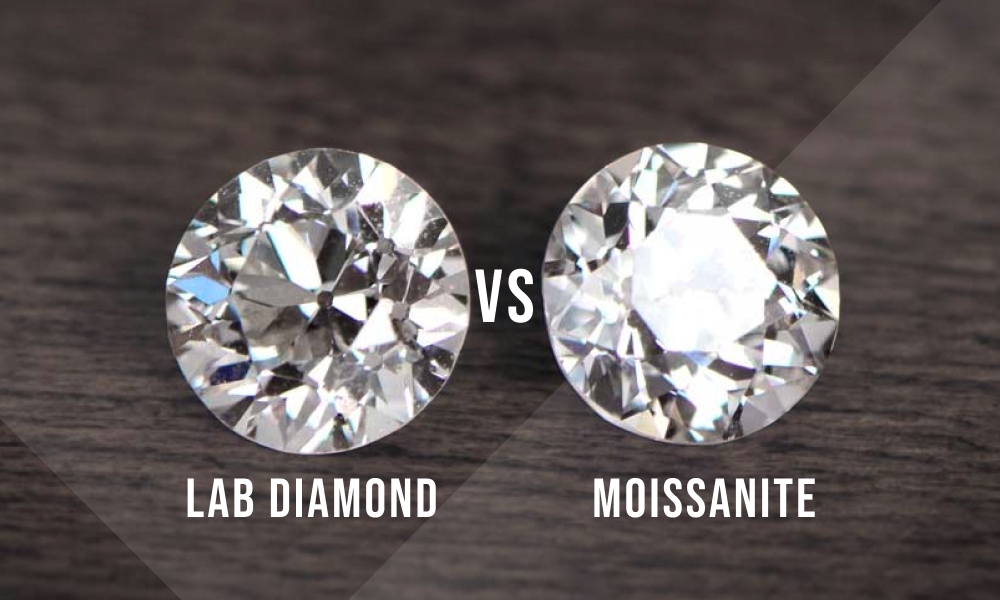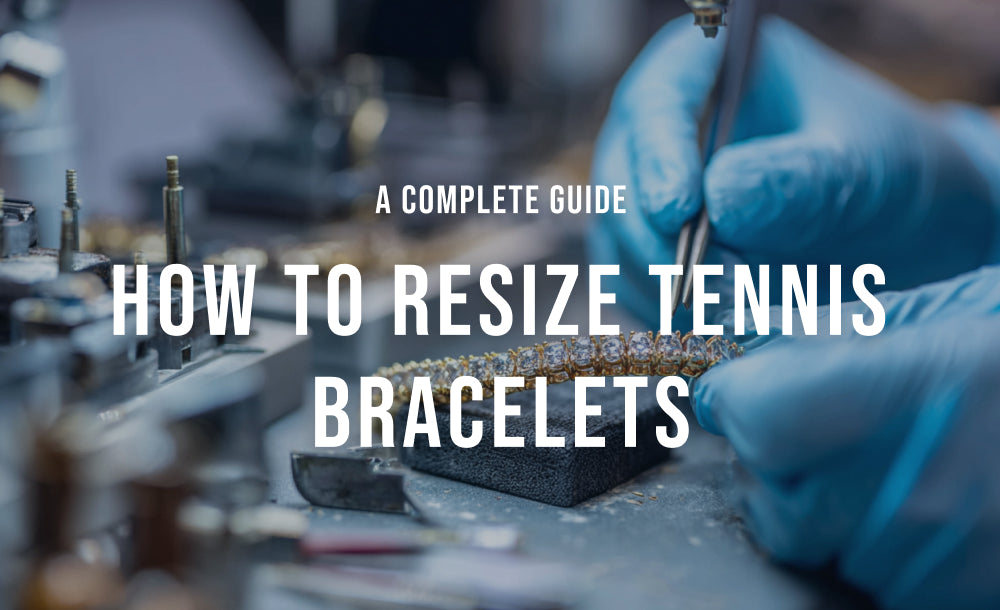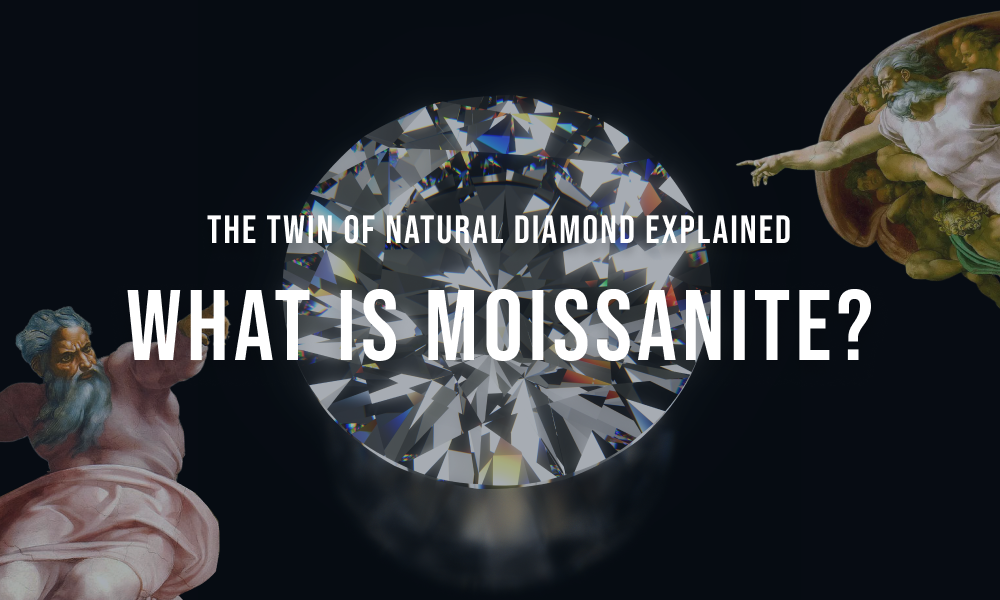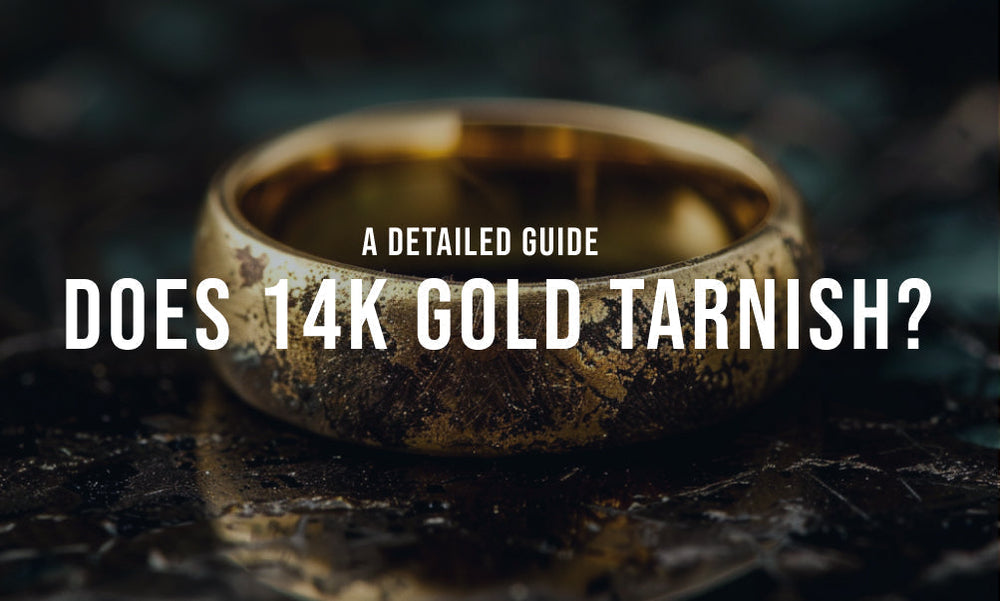Do you love your gold plated jewelry and want to maintain its luster? This blog post will provide easy-to-follow steps for how to clean tarnished gold-plated jewelry and how to clean gold plated jewelry.
Learning how to clean gold plated jewelry that turned black and remembering to periodically clean your gold plated jewelry will help it to retain its glamorous shine.
Why Clean Gold-Plated Jewelry
Learning how to clean gold plated jewelry will help keep it looking brand new. Gold-plated rings, chains, bracelets, and other jewelry combine elegance, luxury, and affordability because of its composition of a base metal (sterling silver, alloy metals) coated with gold plating. Engaging in regular cleaning practices removes grime, bacteria, and other build-up caused by cleaning agents, lotions, chemicals, dirt, food, and more.
Want to learn more about care and maintenance? Check out our other blog, How to Clean a Cuban Link Chain - An In-depth Guide for more easy-to-remember information.
Prevent the Jewelry from Getting Tarnished
Have you wondered: does vermeil tarnish? Tarnishing refers to the discoloration of metal over time. Tarnishing is corrosion developing on the metal's surface, causing it to form a dull grayish-to-black coating. Tarnishing strips the jewelry of its initial quality and original appearance; air and moisture also play a part in the corrosion process, causing jewelry to quickly lose its luster.
Prevent Blackening
Blackening is caused by the base metal and gold plating reacting to external substances like sweat, lotions, or chemicals, resulting in an adverse effect with a blotched metal appearance.
Protecting any jewelry with regular cleaning keeps it from blackening and tarnishing, allowing it to retain the glam look you love.
Make It Look Like Real Gold
Gold plated rings, chains, necklaces, pendants, bracelets, and other jewelry mimics solid gold jewelry, available in all the trendy, sophisticated, glamorous, popular, understated, or statement-worthy styles similar to identical-looking fine jewelry--all at a fraction of the cost.
Cleaning your gold-plated jewelry, removing rings before you wash your hands or apply lotion, and putting your jewelry on AFTER spraying on SPF, perfumes, and glitter body spray will keep your jewelry looking like real gold.
Gold plated jewelry has been dismissed in the not-so-distant past as being a cheap fashion accessory. New styles of today's trends, designers, and companies have reinvented what it means to be gold-plated–giving it a good reputation. No longer thought of as a cheap alternative, gold plated jewelry is on the rise for a cost-effective way to showcase your true style without breaking the bank--especially if you seek a trendy look that you don't want to sink a bunch of money into.
Take a look at our collection of 14K Gold plated jewelry!
How to Clean Gold-Plated Jewelry

Gold-plated jewelry cleaning follows different rules than fine jewelry or solid metal jewelry; this is because it is a thin metal coating over a base metal and should be treated with care.
Please note: some stones and finishes should not be immersed in water. Always inquire with the manufacturer or designer BEFORE you attempt any cleaning method if you are uncertain.
👉 See also: "How to Clean a Cuban Link Chain - An In-depth Guide"
Properly Moisturize
Using a mild dish soap and warm water for your gold-plated jewelry is an effective method for removing dirt, debris, and bacteria build-up on the surface.
- Take a few drops of Dawn or other similar solutions and water, mixing both together.
- Soak the piece in the solution for a few minutes. This will loosen the debris.
- Gently scrub the ring, earrings, chain, or pendant with a soft toothbrush (unused and brand new), or similar brush, removing the debris. Harsh scrubbing is not recommended--this may ruin delicate design details. Paying attention to the underneath/backside, setting, locks, and other areas will help remove heavier build-up.
Let It Dry
Once you've cleaned your gold-plated jewelry, allow it to air dry. Placing the jewelry on a clean, dry towel or cloth allows it to dry out in the open with fresh air.
Do not use a hairdryer, microwave, or other heat sources, as excessive heat can damage the delicate gold plating.
Polish with a Professional Jewelry Cloth
Using a jewelry polishing cloth removes insignificant blemishes and imperfections on the jewelry. Jewelry clothes are inexpensive and available for purchase from different retailers.
Jewelry cloths can be used over and over again, making it a great investment. Once the jewelry cloth is covered in black from the metal, it can be discarded.
Gently rubbing the cloth in circular motions or just straight down on a ring instantly gives the jewelry a brand-new shiny appearance without causing damage.
Store in a Jewelry Box
Storing gold-plated jewelry keeps it from getting lost, damaged, dropped, misplaced, or exposed to cleaning agents sprayed in the air. Placing your pieces in a jewelry box, plastic jewelry bag, or soft velveteen pouch protects them from dust, moisture, and potential scratching against other jewelry pieces.
Pro Tip: Always remember to store each item separately. Or, place them in individual compartments in jewelry boxes, armors, and organizational hanging bags. Giving each piece its “space” keeps them from tangling and scratching.
👉 Learn more how to clean gold plated tennis chains!
Best Liquids to Clean Gold Plated Jewelry
Cleaning your gold plated jewelry with the correct liquids is essential to maintain its pristine condition and luster. Here are a few suggestions with some listed above:
Warm Water
Warm tap water (by itself) is the gentlest and most widely recommended liquid for cleaning gold-plated jewelry. Warm water helps loosen dirt, and remove oils secreted from the skin and residues from lotions, makeup, and perfumes without damaging the delicate gold plating.
Dishwashing Liquid
As mentioned above, mild dishwashing liquid is an excellent choice for cleaning gold-plated and fine jewelry. Dishwashing liquid is designed to cut through grease and grime, making it very effective at removing bacteria and debris. Mixing a few drops of dishwashing liquid with warm water creates a safe and gentle cleaning solution.
Saltwater with Baking Soda
A cleaning solution using saltwater and baking soda may help to remove more stubborn, build-up grime. Saltwater may also remove tarnishing, while baking soda is a gentle abrasive that removes surface stains.
How to use:
- Mix a teaspoon of salt and a teaspoon of baking soda in a cup of warm water.
- Gently place your jewelry in this solution for a few minutes, scrub the item with a soft brush, and then rinse thoroughly with cool, clean water.
- Use Sparingly: Baking soda and saltwater are harsher than soap and regular water. Use with caution.
Liquids to Avoid while Cleaning Gold-Plated Jewelry

Both fine jewelry and gold plated jewelry should be treated with care. They should not be exposed to harsh liquids and chemicals - this will cause them to be damaged. Below is a list to avoid:
Cold Water
Cold water, although safe for gold-plated jewelry, is considerably less effective at removing dirt and oils in comparison to the warm soapy water solution. Warm water dissolves oils and residues more effectively than cold water. Warm--NOT boiling hot.
Chlorinated Water
Chlorine is found in swimming pools and spas/hot tubs/jacuzzis, removing harmful contaminants and bacteria from the water, and keeping it safe for multiple people to use and enjoy.
Although chlorine is an important element for public swimming activities, chlorinated water should not come into contact with gold-plated jewelry.
Chlorine is a strong chemical and may react with metals, potentially causing discoloration or damage to the gold plating. Removing your gold-plated jewelry before entering chlorinated water prevents exposure and possible loss.
Bathing Soap Water
Are you constantly forgetting to remove your accessories before hopping in the shower and bath? Rewinding from a busy day, in a rush to get ready, or excited for a night out all play into it, making removing your jewelry before bathing easy to forget. Bathing soap water, scrubs, body wash, soap, and hair care products should be avoided because they may contain adverse chemicals or additives (scent, etc.) that can be abrasive and damage the gold plating over time.
Want to learn more about gold karat and gold plating? Check out our blog, Introduction to All Gold Karats: 9k, 10k, 14k, 18k, 22k, and 24k.
Frequently Asked Questions
Below is a list of frequently asked questions about gold plated jewelry cleaning:
How often should I clean my gold-plated jewelry?
The frequency depends on the amount you are wearing and how it looks. Cleaning your jewelry every few weeks after wearing it will help remove debris, bacteria, and unsightly build-up. Stopping discoloration and tarnishing when you notice it will help prevent further damage.
Can I use vinegar to clean gold-plated jewelry?
Vinegar is not recommended for cleaning gold plated jewelry because it is harsh and acidic. Sticking to the options mentioned above will help you keep your jewelry clean, free of bacteria, and free of damage and corrosion without destroying its beauty.
Conclusion
Gorgeous designs, genuine gemstones, sparkling details, and exclusive capsule collections have made gold plated jewelry popular and also "socially acceptable.”
Proper cleaning is essential to keep any fine or gold plated jewelry looking new, sparkling, and shiny--perfect for wearing all the time because it looks stunning.
Maintenance: Regularly cleaning your gold-plated jewelry is important for maintaining its beauty and overall quality over time--the gold plating will preserve without corroding, tarnishing, flaking, chipping, and fading.
Keeping it Away From Danger: This especially applies to rings. Handwashing and food handling make your rings pick up dirt easier than other accessories. Perfume, body sprays, body wash, and soap all coat jewelry with residue.




































































